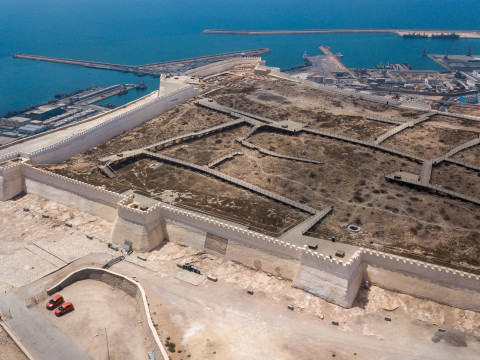
A History of Performance Art
By Kelly Grovier
Published on 15 October 2023
With Marina Abramović taking over the Main Galleries at the RA, we look at some other artists who have shaped the history of performance art.

1916 Cabaret Voltaire’s artistic anarchy
According to legend, modern-day performance art was born in the backrooms of a tavern in a rundown district of Zurich, Switzerland in 1916. A pair of German poets and pioneers of the Dada movement, Hugo Ball and Emmy Hennings, invited avant-garde painters and musicians, playwrights and poets to take the stage and experiment with new forms of creative expression. The result was a cacophony of competing performances. Who could have guessed when the rowdy audiences stormed the stage, provoked by the syncopated squawks, that this was the start of something big?

1951 Pollock’s painting performance
In 1951, German photographer Hans Namuth, after spending months capturing images of Jackson Pollock, became dissatisfied with the still snapshots he’d taken of the famous dripper of paint. Determined to chronicle Pollock’s mesmerising movements, Namuth swapped the artist’s canvas for a sheet of clear glass with a camera fixed beneath. The result is a hypnotic ballet of chaotic gestures, every bit as compelling as the final painting, melting the distinction between the making, the maker and the made.

1959 ‘Happenings’ blurred art and life
Pollock’s movement also influenced American artist Allan Kaprow. Convinced that Pollock had revealed that what was essential in art was not the completed work but the ephemeral gestures that go into making it, Kaprow conceived a creative event to further blur the line between art and life. 18 Happenings in 6 parts, held in 1959, required the audience to ‘become part of the happenings’, as they navigated a set of rooms to hear performers shouting monosyllabic words, squeezing oranges and painting rudimentary shapes on canvases. You had to be there.

1959 Yves Klein’s immaterial invitation
How much would you pay for nothing? Between 1959 and his death in 1962, French artist Yves Klein persuaded eight collectors to hand over between 20 and 1,280 grammes of gold, in exchange for receipts of purchase for a Zone de Sensibilité Picturale Immatérielle (Zone of Immaterial Pictorial Sensibility). After signing up, Klein then told them the next step was to burn their deeds while the artist threw half the gold into the Seine. The gold that didn’t end up in the river is reputed to have been made into the leaf he used to create a series of glimmering canvases known as his ‘Monogolds’.

1964 Yoko Ono yields to the audience
Erasure is key to Yoko Ono’s legendary early work Cut Piece, first performed in Japan in 1964. Beautifully dressed, sitting on an empty stage with a pair of scissors lying before her, Ono invited audience members to snip fabric from her clothing. The range of responses was as intriguing as Ono’s impassiveness was captivating. Some respectfully trimmed a sliver of hem, others sliced huge swathes of material. With every clip it became clearer that what was really being stripped bare wasn’t the artist’s body, but the soul of every one who grabbed the shears or silently watched.

1966 Rauschenberg goes multisensory
Open Score remains one of the most ambitious performance works ever undertaken. In 1966, the American artist Robert Rauschenberg gave a pair of tennis racquets fitted with acoustic sensors to minimalist painter Frank Stella and tennis pro Mimi Kanarek, to play a match in the 69th Regiment Armory in New York. Every time a ball was hit, spotlights went off until complete darkness fell. At this point infrared cameras begin projecting the eerie movement of a group of figures. The flummoxed audience was then treated to the sounds of a group of technicians who coaxed squeals and hums from transistor radios and crossed phone lines, directed by experimental composer and theorist John Cage.

1973 Ana Mendieta’s living land art
Cuban-born American artist Ana Mendieta channelled the anguish of being separated from her country of birth, which she fled during the Cuban Revolution. For her ‘Silueta’ series, by variously pressing herself into mud and encasing her body with earth, the artist left behind fractured impressions and silhouettes of her shape. Photographs taken of her absent presence – which appear neither abstract nor figurative – powerfully capture the essence of performance art which creates meaning in the fleetingness of its existence.

1974 Beuys’s shamanic healing action
In May 1974 Joseph Beuys, the pioneering German artists, arrived at the René Block Gallery in New York. Beuys intended to commune for days with a wild coyote, captured and placed in a large empty room, in a work he entitled I like America and America Likes Me. Beuys believed the coyote embodied the essence of a Native American spirit with which the government and people of the US had failed to reconcile, resulting in manifold traumas. Beuys later reflected that, ‘a reckoning has to be made with the coyote, and only then can this trauma be lifted.’

1975 Schneemann’s vagina monologue
At the ‘Women Here and Now’ exhibition in East Hampton, New York, American artist Carolee Schneemann clambered onto a table and, naked, smeared her face and arms with paint and read from her book Cezanne, She Was a Great Painter. She then produced a scroll of paper from her vagina, on which the artist had printed the transcript of a conversation with ‘a filmmaker’ that explored the restrictiveness of traditional gendered roles. As a metaphor for the liberating potential that performance art in the 1970s and 80s held for female artists, Interior Scroll continues to reverberate.

1983 Hammons’ snowball street art
Winter 1983, and a man is seen unrolling a small striped rug on a frozen street corner in New York City. He begins arranging for sale dozens of immaculately sculpted snowballs. Forty years later, the significance of African-American artist David Hammons’ deceptively simple piece Bliz-aard Ball Sale is still being unpacked by cultural commentators. Adopting the posture of a street vendor hawking scraps of weather to which every passer-by had equal access, Hammons challenges assumptions about where art is exhibited, who shapes it, unleashes it, and at whom it’s ultimately aimed.

1992 Colonialism comes in a cage
Cuban-born American artist Coco Fusco and Mexican activist and writer Guillermo Gómez-Peña took artistic audacity to another level with The Couple in the Cage: Two Undiscovered Amerindians Visit the West. Touring Spain, the UK, the USA and Australia, Fusco and Gómez-Peña presented themselves as caged natives, taken from a remote (and invented) island called Guatinaui. Wearing a mish-mash of apparel from disparate cultures (including cowboy boots, grass skirts and sports sunglasses), the pair adopted the posture of the exotic ‘other’, recalling exploitative exhibits of dislocated people a century before.

1992 Making a meal of a gallery
The Argentina-born Thai artist Rirkrit Tiravanija sought to melt the barriers that divided the art world into creators, observers and sellers. Tiravanija reversed the interior design of the 303 Gallery, so that rooms previously devoted to displaying work were now inhabited by the gallery’s behind-the-scenes staff, who continued to go about their business. Meanwhile, the rooms the staff had vacated were transformed into a kitchen by the artist, who prepared dishes of vegetable Thai curry for his audience, giving everyone involved food for thought.

2001 Alÿs, the police and a gun
Belgian-born, Mexico-based artist Francis Alÿs attempted to break down the creative act, entangling truth and artifice. In his 2001 performance work Re-Enactment, he walked the streets of Mexico City brandishing a handgun, his finger poised on the trigger, while a cameraman discreetly captured his edgy excursion on film. After being arrested by the police, the artist then worked with law enforcement officials in staging a filmed re-enactment of his illicit performance. The two versions of the action side-by-side invites us to contemplate the shady crossroads of truth and fiction in art and life.

2012 Pussy Riot’s protest performance
Members of the feminist group Pussy Riot were arrested for a fearless performance in 2012. Outraged by the Russian Orthodox Church’s role in allegedly helping Vladimir Putin win re-election, five members of the Russian protest group entered the Cathedral of Christ the Saviour in Moscow, pulled on brightly coloured balaclavas and filmed themselves dancing defiantly in the space. The brief footage was then spliced into a video, entitled Punk Prayer: Mother of God Drive Putin Away. Three of the five performers were arrested, convicted of ‘hooliganism’ and sent to prison colonies. The group’s courageous assertion of art over authoritarianism has proved inspirational internationally and has helped propel performance as a creative force to the forefront of cultural consciousness.
Kelly Grovier is an art critic and feature writer for BBC Culture.
Don't miss Marina Abramović in our Main Galleries 23 September 2023 – 1 January 2024

Enjoyed this article?
As well as free entry to all of our exhibitions, Friends of the RA enjoy one of Britain’s most respected art magazines, delivered directly to your door. Why not join the club?
Related articles
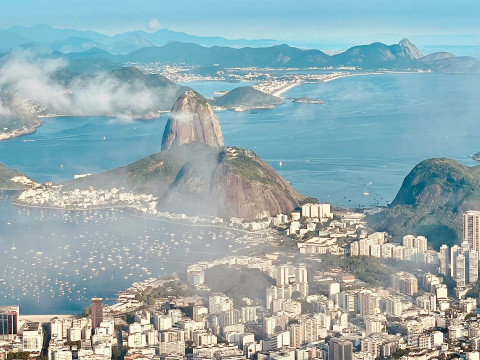
Five Brazilian cultural icons from the 20th century
28 February 2025
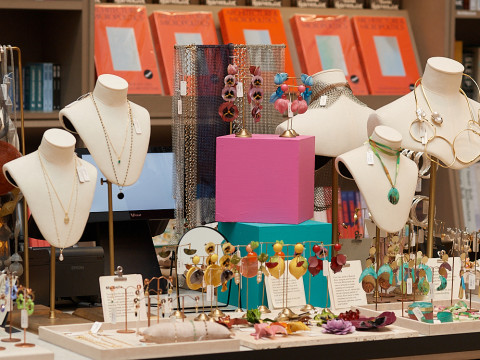
A love letter to the gallery gift shop
18 November 2024
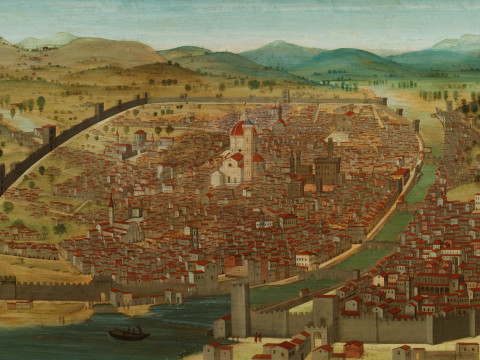
Painting the town: Florence in 1504
15 November 2024

Moving a masterpiece
7 November 2024
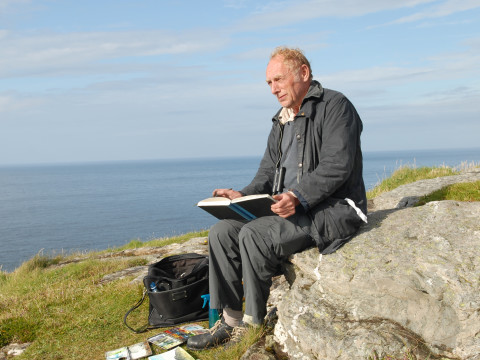
In memoriam: Norman Ackroyd RA
20 September 2024
